If there's one activity on a cruise ship I've heard the most negative comments about, it's the art auction.
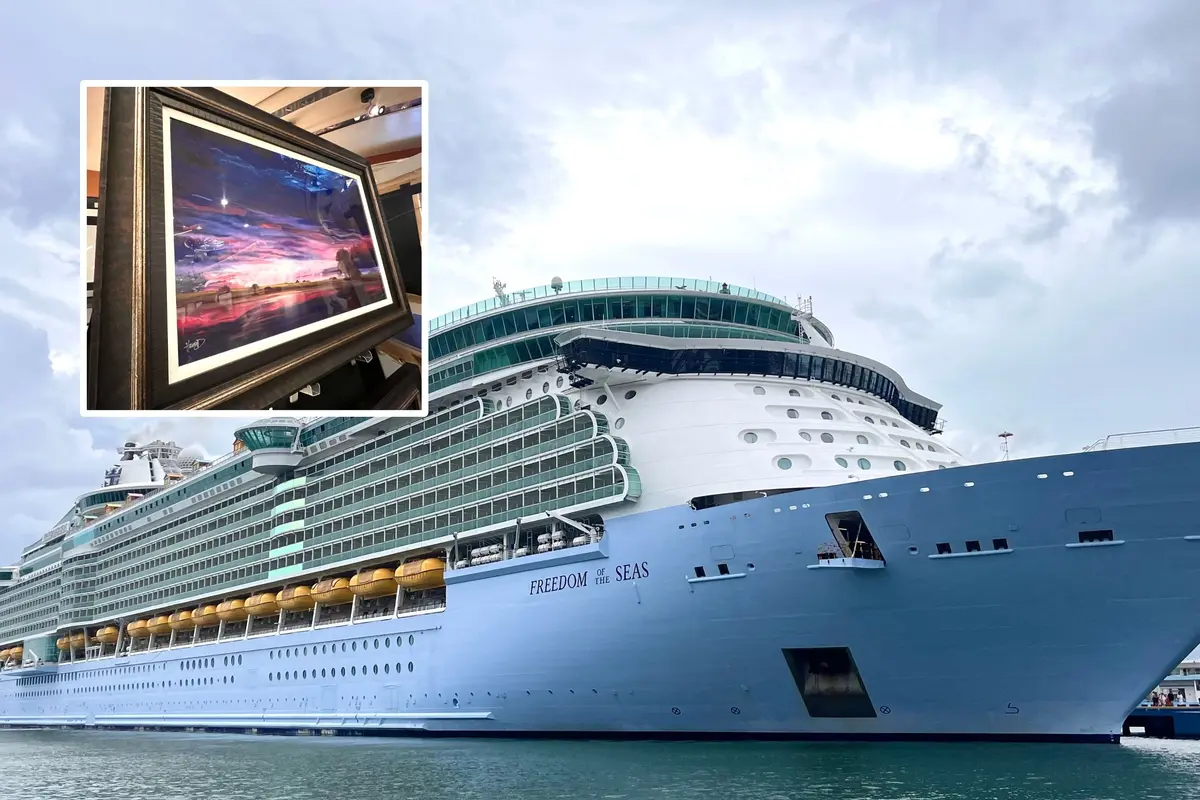
While some cruisers seem to enjoy the art auctions, it's hard to overlook the lawsuits and negative comments surrounding how the auctions are conducted.
Multiple lawsuits and employee turnover on vessels have given the dealer a less-than-sterling reputation.
According to Bloomberg Business, the company was subject to almost a dozen lawsuits between 2008 and 2016.
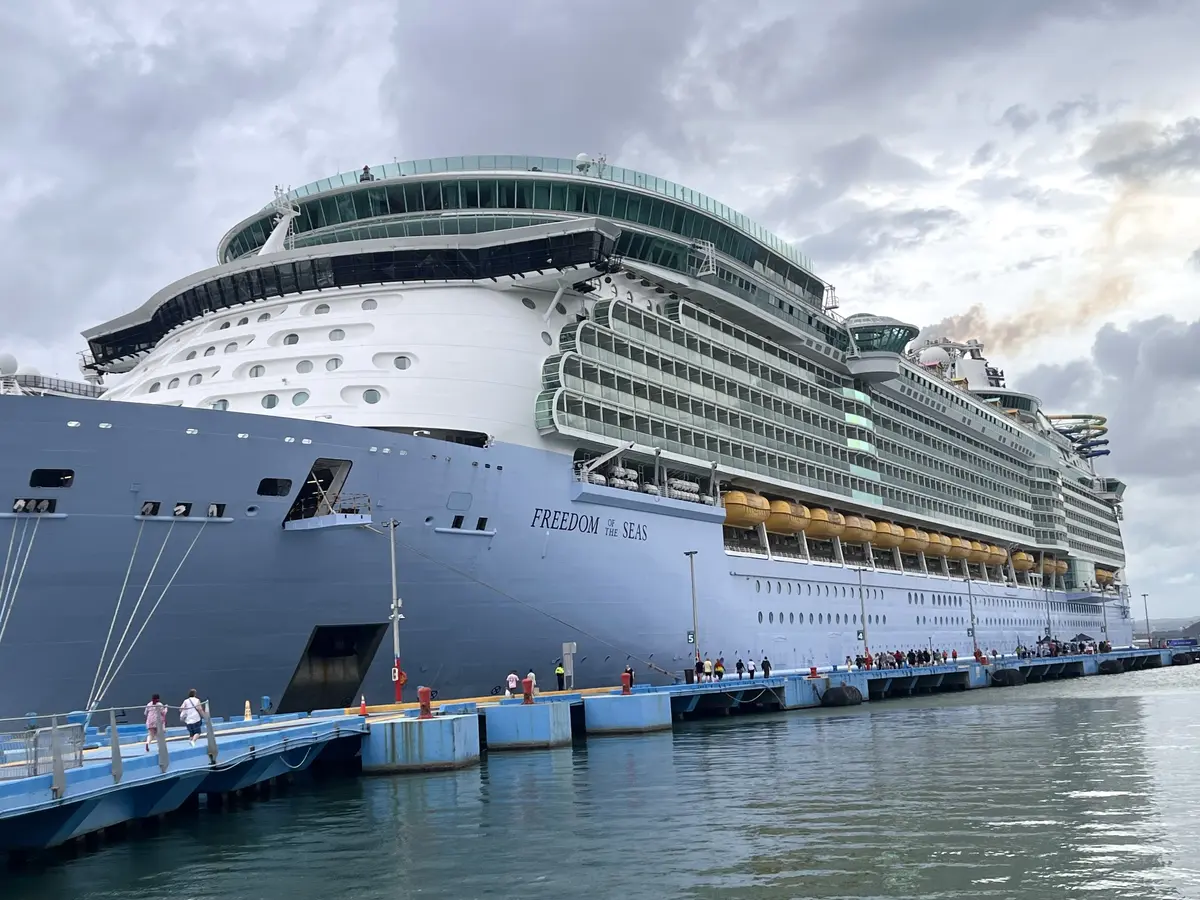
On the other hand, some cruisers praise the opportunity to buy art directly during their cruise. They happily purchase artwork that will hang in their home for years to come.
Read more: What should you not buy on a cruise ship?
Are cruise ship art auctions really as bad as people say?

I've never been to an art auction, much less one on a cruise ship, so I decided to find out for myself.
On my recent 7-night Freedom of the Seas cruise, I attended a Park West art auction.
According to the auctioneer's introduction, Park West believes in making art accessible for everyone.
"Park West Gallery strives to create an entertaining, educational, and welcoming atmosphere that ignites a passion for the arts," the company's website reads.
"Park West’s mission is to make the art world accessible, helping its clients build lasting memories through collecting events, educational seminars, and art exhibitions."
The company conducts 200 auctions a week worldwide—everywhere from cruise ships to Hawaii. Park West has been selling artwork on Royal Caribbean (and Celebrity Cruises) ships since 1995.
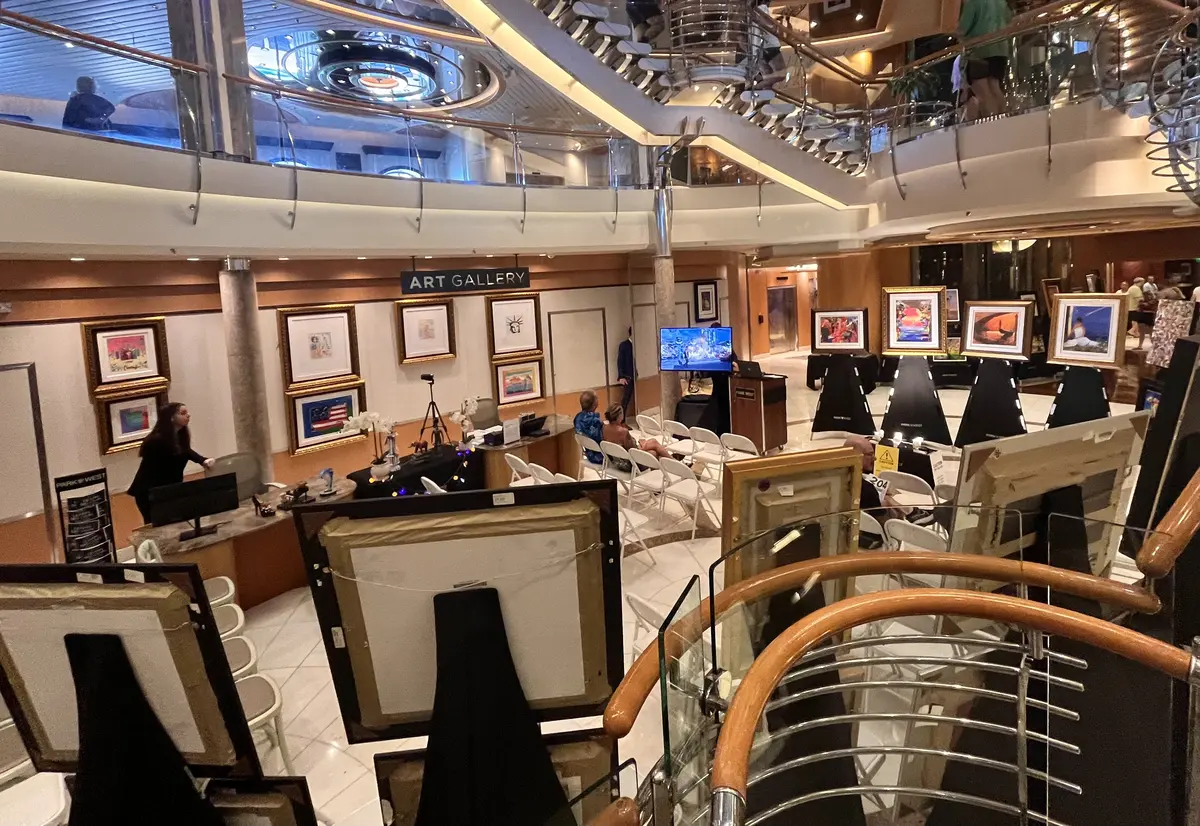
Park West represents over 400,000 original artists and claims to sell original pieces. Original is defined by the dealer as "any artwork created directly under the control and supervision of the artist."
According to Park West, this includes one-of-a-kind artwork or limited-edition graphic works.
However, multiple lawsuits against the company allege that the works sold are merely mass-media prints. These reproductions of original paintings are signed and approved by the artists but are far from one-of-a-kind pieces.
The auction welcomed all cruisers, even those there for the free champagne
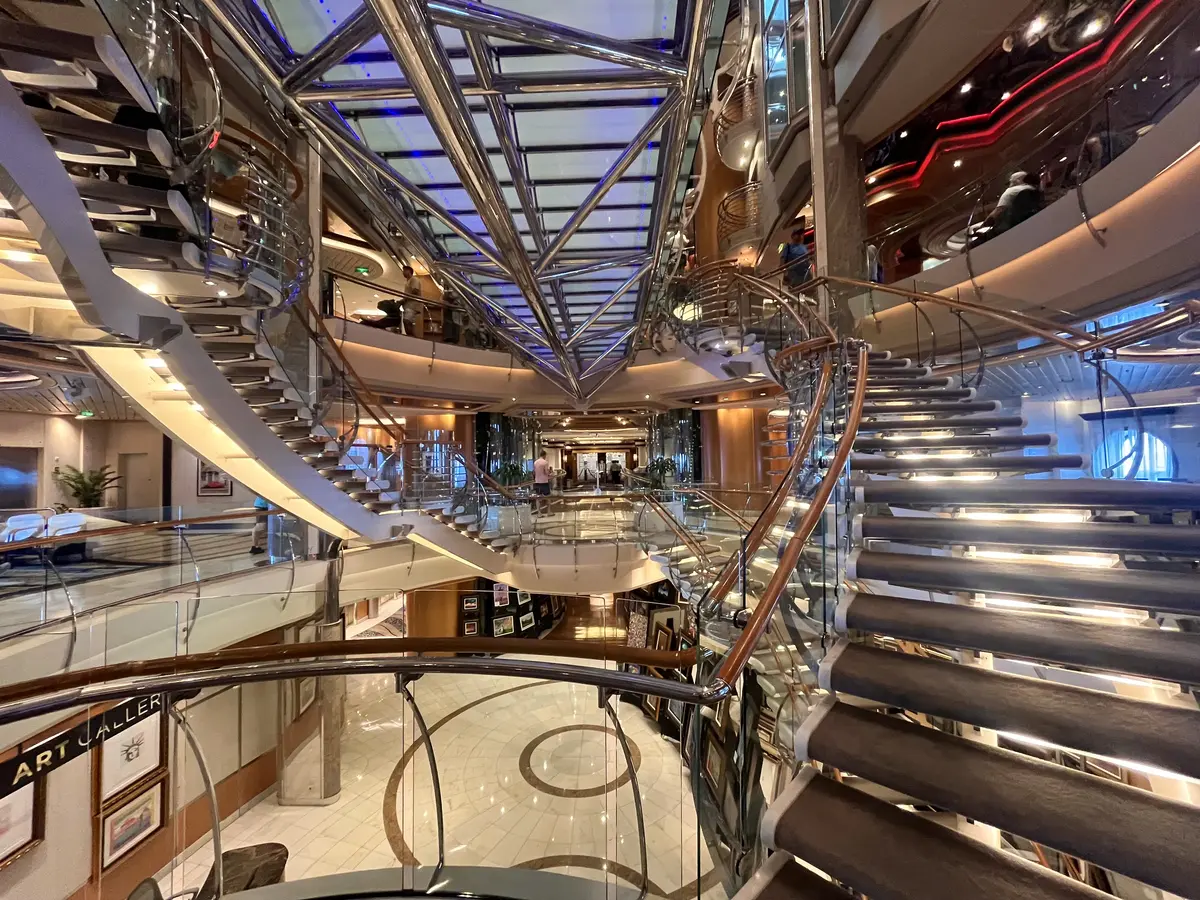
First, the auctioneer invited everyone to walk around the gallery and gaze at the available artwork.
Cruisers who liked a certain piece could leave a sticky note on the frame, or speak to the art gallery staff directly.
The pieces varied in genre, from colorful sculptures of anthropomorphic dogs to patriotic eagles, and classic portraits of pale women.
I was intrigued by the artworks that cruisers started to pick out as their favorites: once one sticky note appeared, more would be placed on the same piece.
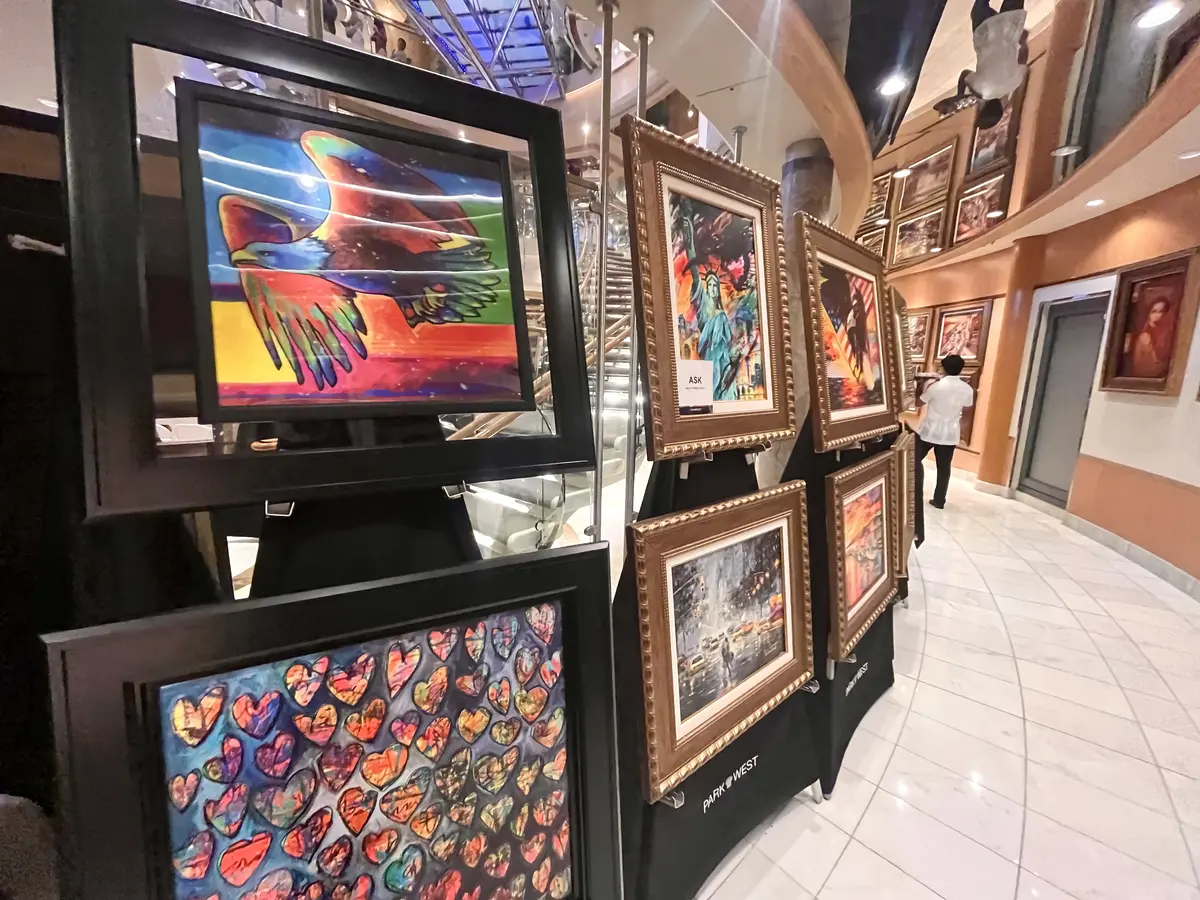
Most attendees, like myself, were only there to observe and drink the free champagne, but a surprising amount filed into chairs to begin bidding.
At least 30 of my fellow cruisers held bid cards and looked ready to buy their favorite artwork. A server came around with a tray of champagne, passing flutes to every guest present.
As the auction began, the auctioneer sprang to life, speeding the process along with that famous droning voice.
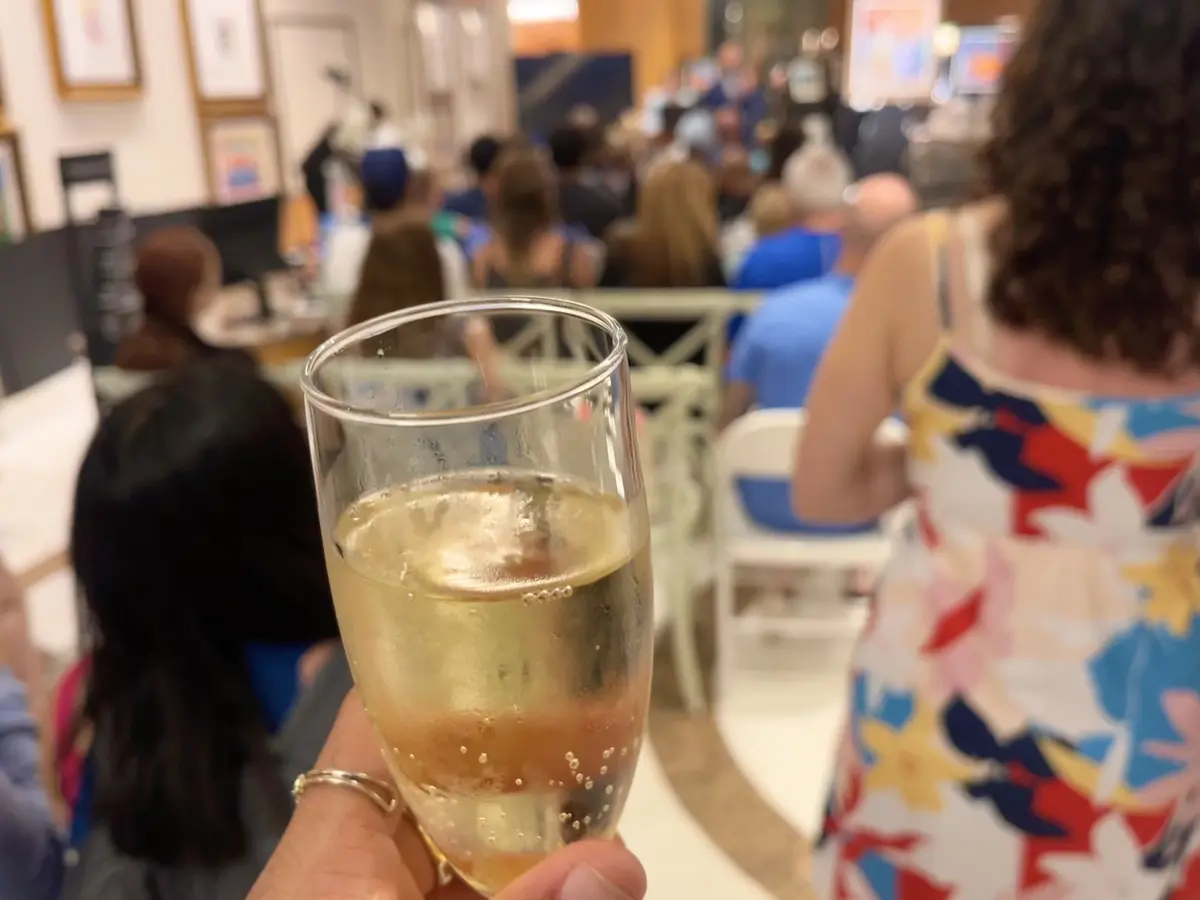
At the beginning, he explained that he would clack his gavel against the podium when each artwork sold.
I was shocked to hear the clang nearly every 3 minutes—every piece of artwork sold right away.
The prices ranged from $500 to $1500, and I couldn't discern any metric of value for the artwork. Pieces that were more colorful, simplistic, and blocky sold for thousands of dollars, while the complex, watercolored artwork painted in tiny brushstrokes was less popular.
Park West used more clever sales tactics
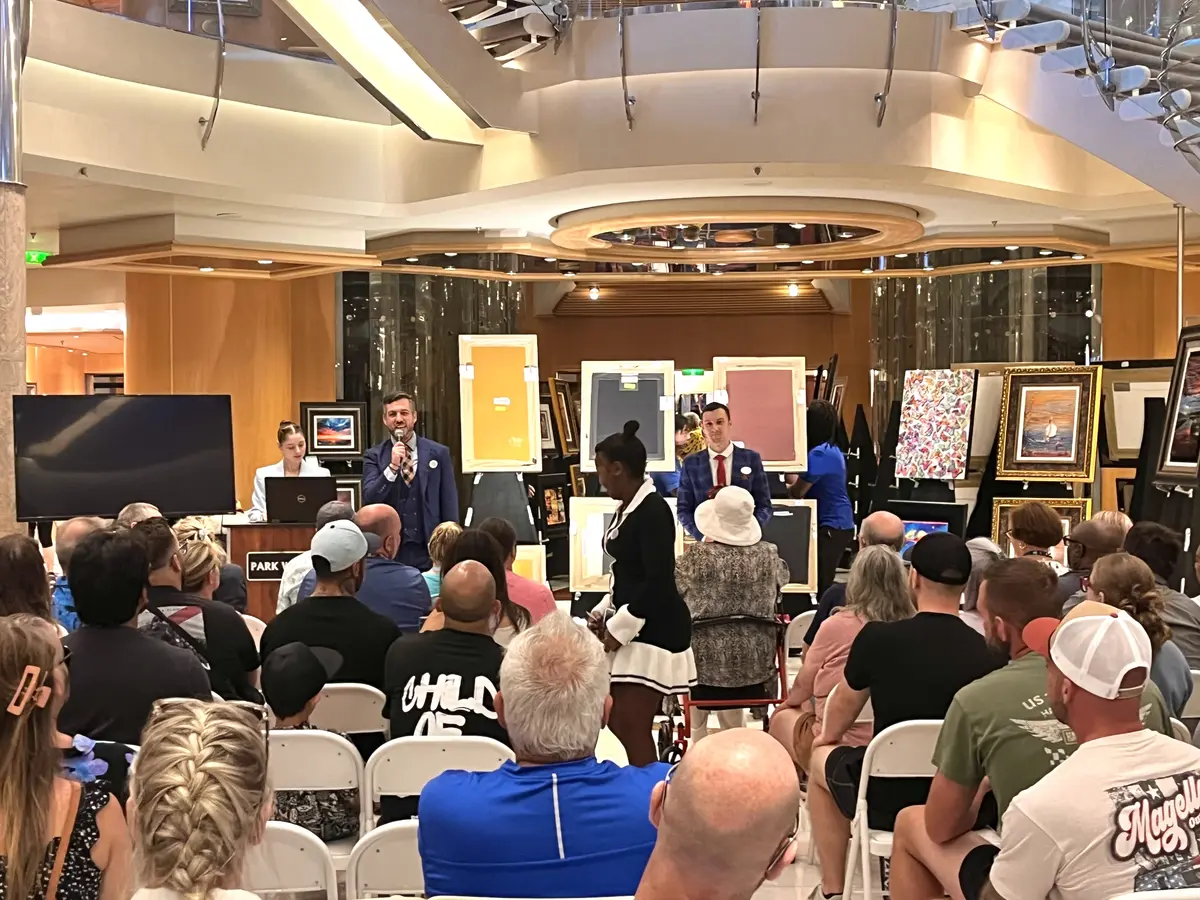
The auctioneer's job was clearly to help sell the pieces, so he played up the creativity or unique print of the artwork.
I was hoping to learn more about the modern art scene by attending, but I was disappointed there was little substance beyond the sales pitch.
Besides highlighting Peter Max, a famous pop artist, little context was given about the art pieces and artists.
I noticed that the auctioneer used more sales tactics to sell the artwork. For example, he created a false sense of urgency by promising that artwork would only be sold at a discounted price to the first two attendees who raised their cards, but then inevitably extending the sale to everyone who jumped in.
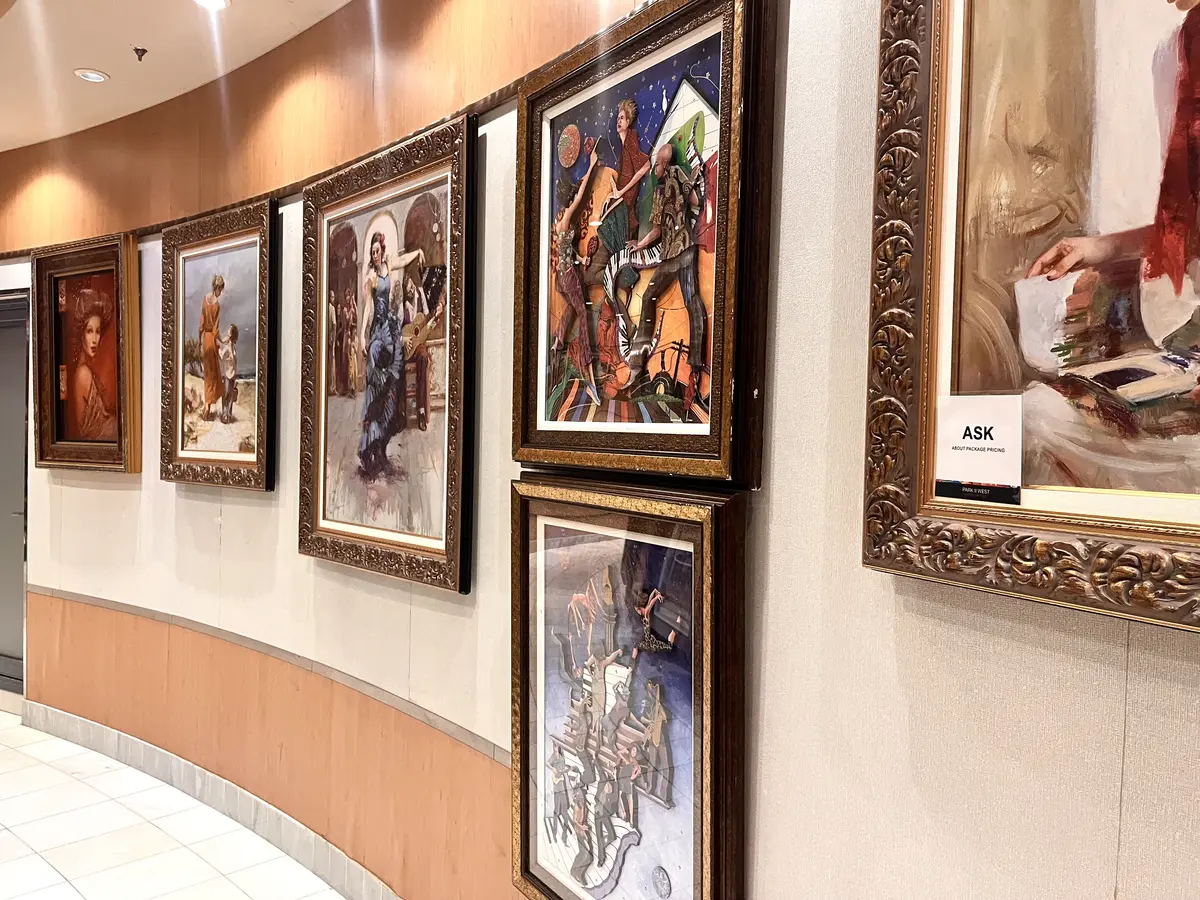
Founder & CEO Albert Scaglione stated in 2009 that Park West has never misrepresented the value of its art.
“The value is whatever price the seller can find a buyer that will pay for it," he said.
Park West's auctioneer did announce that they encourage buyers to individually appraise the artwork—"Don't just take our word for it!"
In addition, the auctioneer was honest about costs and any additional fees.

He announced that cruisers who purchased a piece or won one in a raffle still have to pay the cost of shipping for the artwork.
The auctioneer also explained that the frames we saw were not included in the price. Customers could pay for Park West to fit and add a different frame, or simply choose one on their own.
Park West offers 18-month financing for buyers, which, in my opinion, creates a dangerous sense of security.. Cruisers could bid on artwork they can't actually afford, trusting in the ability to spread the payments out over a year and a half.
The auction moved quickly, but as a passive observer, I found myself both bored and horrified
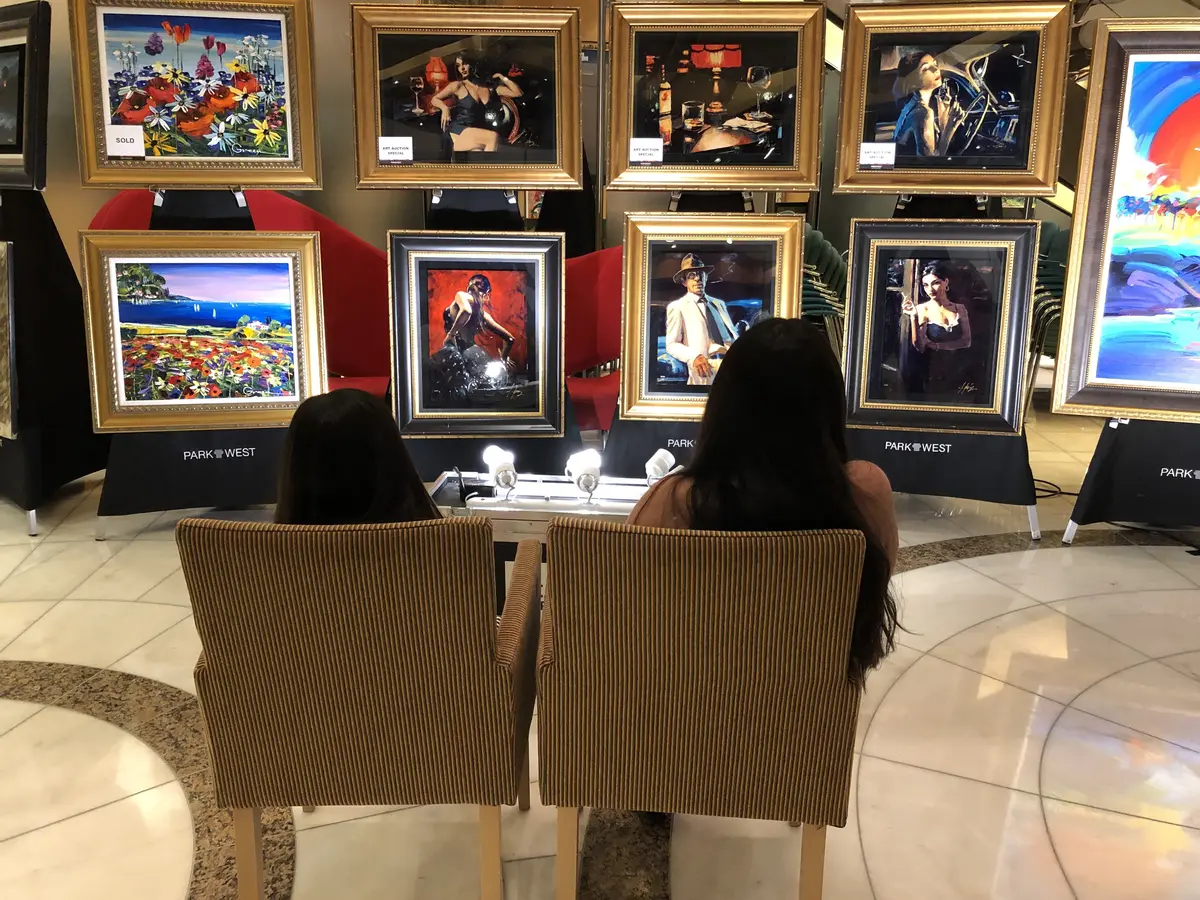
I could hardly believe that cruisers were spending thousands of dollars on seemingly random artworks—and doing so so quickly!
The auction moved quickly, with unique features like a "mystery bid."
Four artworks were placed backward on stands, and buyers bid at a discounted price to purchase the unseen artwork. All four mystery pieces sold for $1200.
Read more: 5 Costly lessons learned on a cruise (and how to avoid them!)
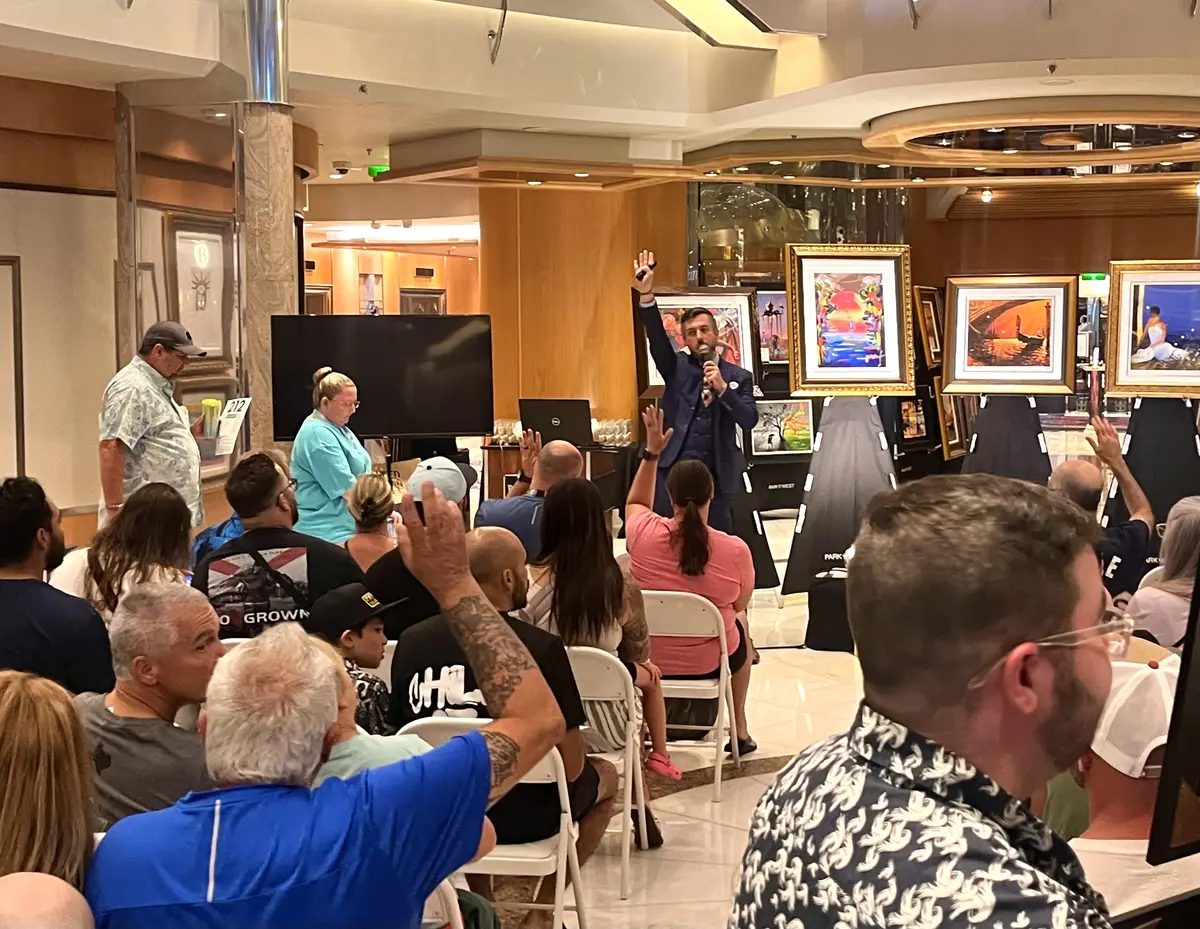
Bottom line, cruise ship art auctions are worthwhile for the novel experience, free champagne, and the chance to spend a lot of money on a piece of art.
If you're not looking to purchase an artwork, you'll gain just as much value from independently pursuing the art around the ship.
Since I didn't purchase any art, I can't speak to the validity of the artwork and sales practices, but I did notice some pushy sales tactics at play.

